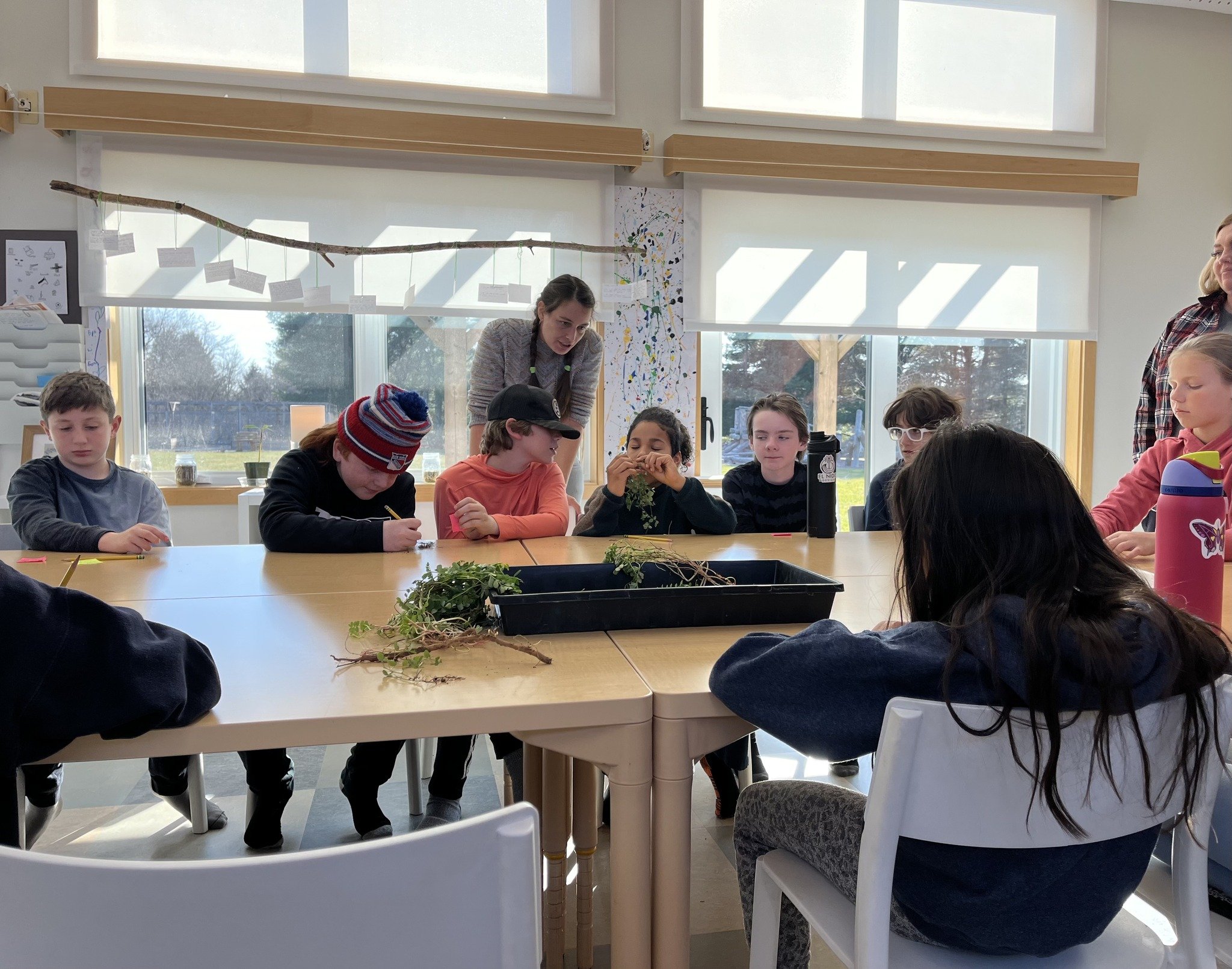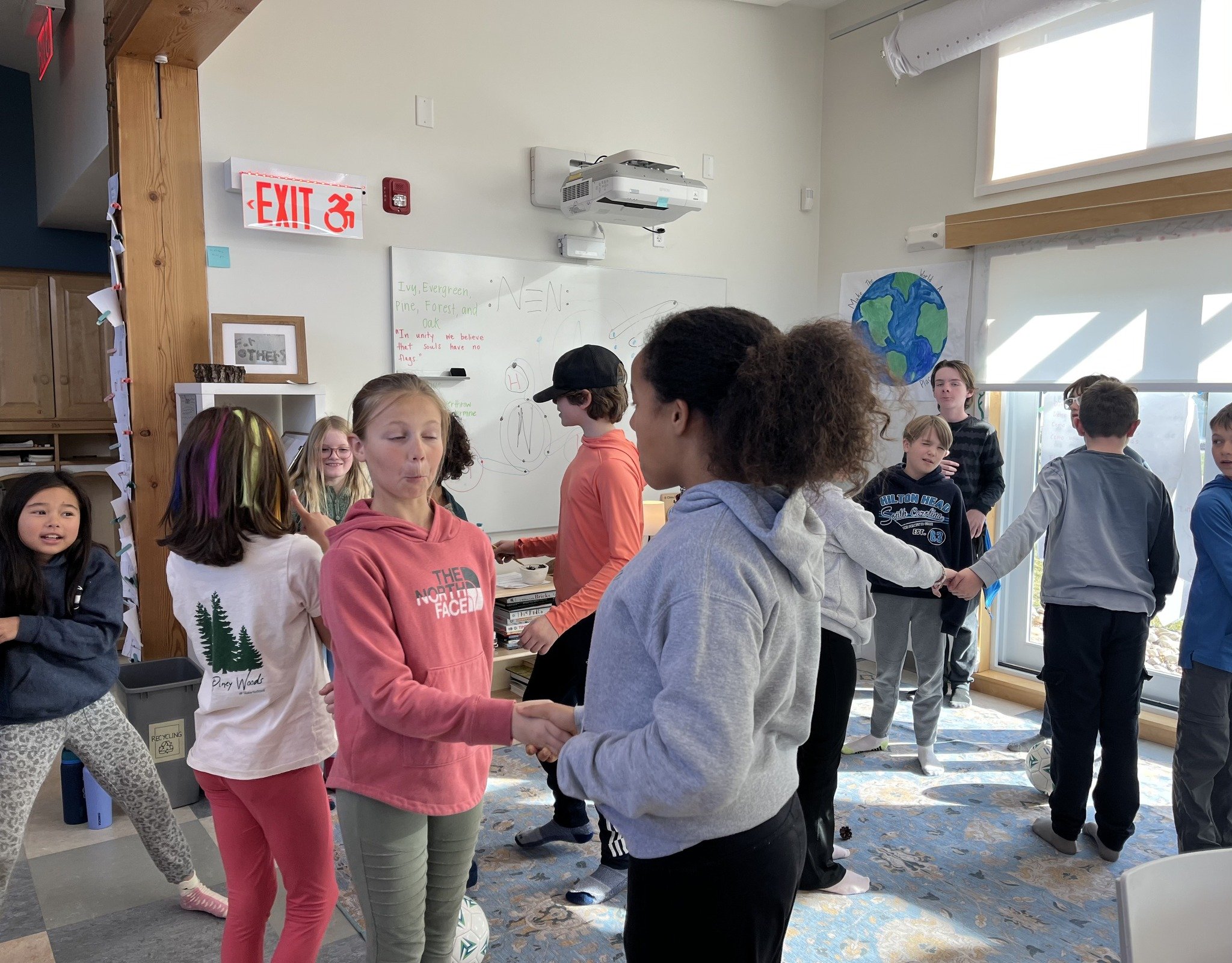
Interdisciplinary Science Blog



Rooted Discoveries: Compounds, Bacteria, and George Washington Carver
By Jennifer Staple-Clark, Founder and Executive Director
Our Grade 5/6 students learned about atoms, elements, and the periodic table through a historical lens. At the same time, they were learning about plantations and slavery, reading the book Freewater by Amina Luqman-Dawson as a read aloud, and considering Slate School's own garden. As they transitioned into the realm of compounds and bonding, the 19th-century work of George Washington Carver provided an interdisciplinary lens, weaving together diverse areas of curiosity and learning.
The students’ introduction to compounds began with an appreciation for George Washington Carver’s discovery that planting legumes replenish nitrogen in depleted plantation soils. They watched a short video about George Washington Carver's scientific work, which shed light on the challenges faced by Southern plantations. Our students pondered the causes of soil depletion and discovered Carver's innovative solution. This sparked reflections on their school garden, leading to decisions like overwintering garlic in a bed that previously grew the legume peas, guided by Carver's insights into crop rotation and nitrogen.
Next, our students further delved into George Washington Carver’s work by reading some of his 1905 publication called “How To Build Up Worn Out Soils”. They considered the why and how behind Carver’s solutions. Exploring nitrogen and nitrogen fixation, students closely examined the Vetch plant's root system, a legume known for its nitrogen-fixing process. They investigated, touched, and observed the root nodules which contain the bacteria that are responsible for the nitrogen fixation. They had many questions and discoveries, and they even explored the liquid emanating from the nodules.
Our students next considered the cellular and chemical processes associated with Nitrogen. They came to understand that the compound N2 is in the air, but not useable in that form by plants or animals until Rhizobium diazotroph bacteria on legume roots break the covalent bonds to create a new compound. The students role played this nitrogen fixation process. A group of 10 students represented the 10 electrons in the two Nitrogen atoms, with a soccer ball in the middle to represent the Nitrogen nuclei. To form the three covalent bonds, students joined hands to represent the bonding. Then came along a student representing Rhizobium bacteria, which broke the triple bond apart, leaving the two Nitrogen atoms ready to form bonds with three Hydrogen atoms each. The students drew this process on paper along the way as well, and they also determined the molecular weight from the periodic table for both of the compounds that they role played: N2 and NH3.
Connecting back to Carver's work, students realized that NH3 produced by legume roots like Vetch enhances depleted soil, tying in seamlessly with their years of gardening experience. Reflecting on past challenges -- such as small garden crops several years ago due to low nitrogen levels -- highlighted their journey toward understanding the molecular basis of organic gardening. The complexity of the natural world and the concept of nitrogen fixation will continue to be ongoing sources of exploration and experimentation.
Collaboration is a cornerstone at Slate School among and between students and educators. Exploring George Washington Carver brought together three essential and unique scientific perspectives among our educators. While I brought the cellular and chemical understandings of the process, our Environmentalist Grace Kenney brought her unique lens about the natural world and gardening at Slate School, while our Horticulturalist Rana Bates integrated her expertise in plants and the nodules of Nitrogen-fixing bacteria. We are always seeking new opportunities like this to make connections across fields and disciplines for our students.
Having recently explored covalent bonding and compounds through Carver's lens, our students are poised to delve deeper into the colorful world of compounds and their various applications. Stay tuned for more updates on their interdisciplinary science explorations!
About The Blog Author, Jennifer Staple-Clark
For nearly 25 years, Jennifer Staple-Clark has been a leader in nonprofit innovation, and she currently leads two nonprofit organizations: Unite For Sight and Slate School. In 2000, Jennifer, who was then a sophomore at Yale University, founded Unite For Sight in her dorm room. Unite For Sight is now a leader both in global health education and in providing cost-effective care to the world's poorest people.
A cum laude graduate of Yale University, Jennifer received a Bachelor of Science Degree in Anthropology as well as in Molecular, Cellular, and Developmental Biology. Early in her career, Jennifer taught high school environmental science and chemistry, where she brought project-based learning to the independent school where she was teaching. She received a national educator award for her work. After dedicating herself to being a high school educator, Jennifer completed two years of medical school at Stanford University School of Medicine before shifting to pursue her passionate interest in global health and eliminating patient barriers to care through building the nonprofit Unite For Sight into an organizational leader in the field. After more than a decade dedicated solely to Unite For Sight, in 2017, Jennifer founded Slate School, an innovative 501(c)3 nonprofit K-12 curiosity-driven and nature-based school in Connecticut. As part of her work as Founder and Executive Director of Slate School, Jennifer draws on her science, medical, anthropology, and public health background to integrate curiosity-driven, interdisciplinary chemistry, biology, and physics into the Upper Elementary classrooms. She is also closely involved in the Upper School interdisciplinary curriculum development.